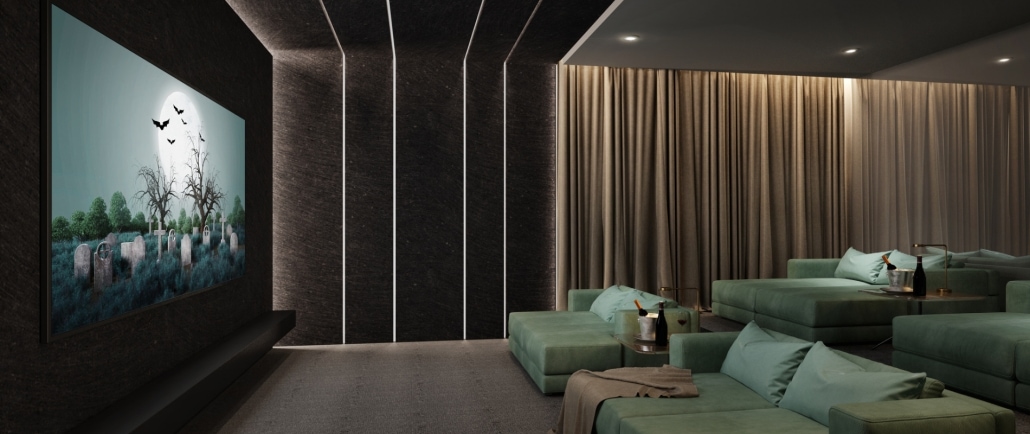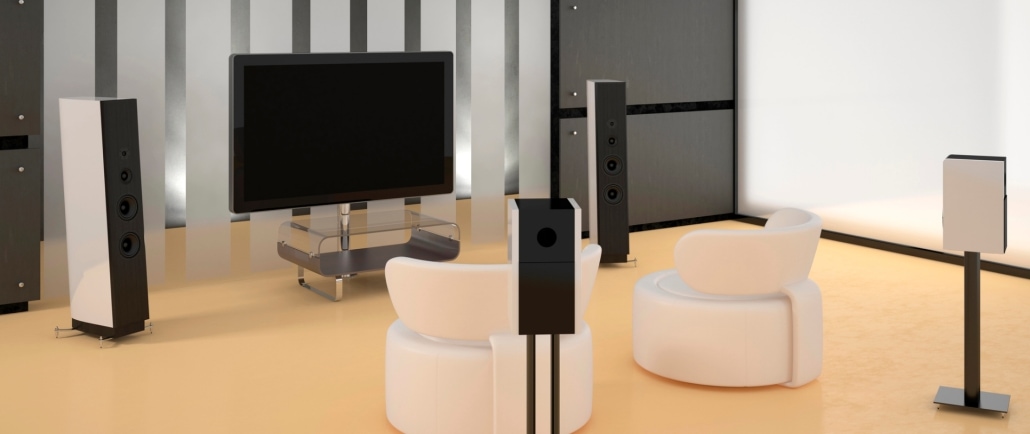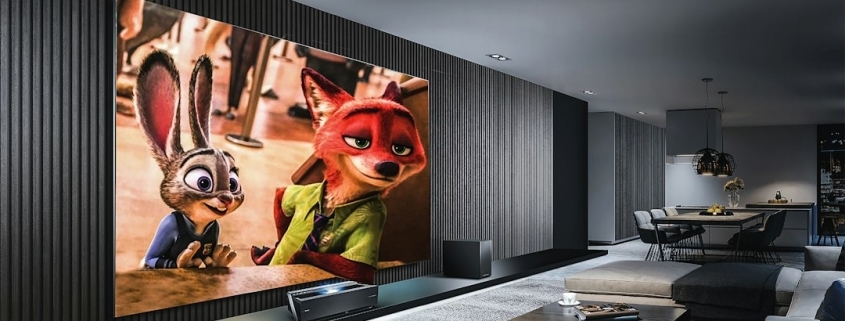Level Up Your Movie Nights: Building the Ultimate Home Theater
Building the Ultimate Home Theater Experience: Tips and Gear for Your Dream Cinema
Creating the ultimate home theater experience is a dream for many movie enthusiasts. With advancements in technology, what was once the domain of the wealthy is now accessible to the average household. In this comprehensive guide, we’ll walk you through everything you need to know to build your immersive home cinema, from selecting the best projector to arranging the perfect seating and everything in between. Our goal is to help you create a space to enjoy your favorite films and shows with the highest picture and sound quality without leaving the comfort of your home.
Picking the Best Projector for Your Home Theater
The visual centerpiece of any home theater is its projector. This section delves into the specifications you should consider, budget-friendly options, and how to manage ambient light to ensure the best possible viewing experience.
Understanding Projector Specifications for an Optimal Home Theater
Understanding key specifications is crucial when selecting a projector for your home theater. Brightness, measured in lumens, determines how well the projector can display images in various lighting conditions. A brighter projector is essential for rooms with ambient light, but you can opt for a projector with fewer lumens in a darkened room.
Contrast ratio is another vital spec, indicating the difference between the darkest black and the brightest white the projector can display. A higher contrast ratio means more detailed images with deeper blacks and more vibrant colors.
Resolution refers to the number of pixels in an image. Full HD (1920×1080) is the minimum for home theaters, with 4K (3840×2160) being ideal for the clearest, most detailed images.
Best Budget Projectors for Home Theater Enthusiasts
Budget doesn’t have to be a barrier to building your home theater. Several projectors offer excellent value for money. Here are a few recommendations:
- Epson Home Cinema 2100: Offers Full HD resolution and is great for those with a modest budget.
- BenQ HT2050A: Provides a bright image, high contrast ratio, and low input lag, perfect for movies and gaming.
- Optoma HD146X: An affordable option for high brightness and decent picture quality.
When choosing a budget projector, compare the specs mentioned, consider the projector’s connectivity options, and consider whether it supports streaming devices or gaming consoles.
The Impact of Ambient Light on Projector Brightness
Ambient light can significantly affect your projector’s performance. Consider a projector with a higher lumen output for rooms with a lot of natural light to ensure the image remains visible. Blackout curtains can also help control ambient light, making using a projector with lower lumens possible.
A projector with around 1,000 to 2,000 lumens should be sufficient for dedicated home theaters with controlled lighting. However, for multi-purpose rooms or those with significant ambient light, aim for at least 3,000 lumens to ensure a bright, clear image.

Choosing the Right Surround Sound System
Sound is half the experience in a home theater. This section covers the importance of a good surround sound system, the differences between Dolby Atmos and traditional setups, and tips for creating an immersive audio environment.
The Importance of a Good Surround Sound System in a Home Theater
A high-quality surround sound system can transform your movie-watching experience, enveloping you in audio and making you feel like you’re part of the action. It’s not just about volume; it’s about clarity, depth, and the ability to hear every detail, from the whisper of dialogue to the boom of an explosion.
Dolby Atmos vs. Traditional 5.1 Surround Sound Setup
Traditional 5.1 Surround Sound setups include five speakers around the viewer and a bass subwoofer. This setup has been the standard for years, providing a surround sound experience by directing sound from different channels.
Dolby Atmos, on the other hand, adds overhead speakers or up-firing speaker technology to create a three-dimensional sound space. This setup allows sounds to be perceived as coming from above, adding to the immersion of the home theater experience. Dolby Atmos is particularly effective in action-packed movies or any content mastered to exploit its capabilities.
Guide to Building a Dedicated Home Theater’s Audio Experience
Creating a dedicated audio experience involves more than just purchasing speakers; it’s about placing them correctly and calibrating your system for the best sound. Here are a few tips:
- Speaker Placement: Follow the guidelines for your chosen sound system setup. For a 5.1 system, place the center speaker above or below the screen, the front left and right speakers at ear height, and the surround speakers to the sides or just behind the viewing area. For Dolby Atmos, additional speakers should be placed overhead or configured to bounce sound off the ceiling.
- Room Acoustics: Soft furnishings and carpeting can help absorb excess sound, while curtains can minimize sound reflections from windows. Consider acoustic panels for optimizing sound quality.
- Calibration: Use a sound meter or your receiver’s calibration tool to adjust the volume levels of each speaker, ensuring balanced sound throughout the room.
Implementing these tips can significantly enhance your home theater’s audio quality, making every viewing experience more immersive and enjoyable.

Creating the Ultimate Movie Theatre Seating at Home
Comfort and viewing angles are as crucial as the technical components of your home theater. This section explores selecting seating and arranging it for the best cinematic experience.
Finding the Best Home Theater Seating for Comfort and Style
The right home theater seating can significantly enhance your viewing experience. Look for seats that offer the perfect balance of comfort and support, with features like reclining backs, plush upholstery, built-in cup holders, and storage for remotes and snacks. Leather or high-quality synthetic fabrics offer durability and easy cleaning.
Consider the size of your room and the number of people you typically host to determine the number and style of seats. Options range from single recliners to large sectional sofas and custom-built seating with risers for tiered rows, mimicking a true theater experience.
Arranging Theater Seating for Optimal View and Sound
The arrangement of your seating impacts both the visual and auditory experience. To optimize both, follow these guidelines:
- Visual: For the best viewing experience, the front row of seats should be placed at a distance of approximately 1.5 to 2.5 times the diagonal size of your screen. Ensure that no seat has an obstructed view of the screen.
- Auditory: Place seating within the optimal sound field of your surround sound setup. Avoid positioning seats against walls, especially for bass-heavy systems, as this can lead to uneven sound distribution.
Overcoming Challenges of Creating a Movie Room in a Home Office
Many enthusiasts must balance their dream home theater with the practicalities of their living space, such as incorporating it into a home office. Here are some solutions:
- Flexible Furniture: Use modular furniture that can easily be rearranged or compacted to free up space when the room needs to function as an office.
- Acoustic Treatments: Invest in acoustic panels that double as decorative elements, helping to manage sound without sacrificing style.
- Technology Integration: Choose equipment that can serve dual purposes, like a projector that can display presentations or a screen that retracts when not in use.
Creating a multifunctional space requires careful planning but can result in a highly versatile and enjoyable room.
Choosing Between a 4K TV and a Projector
Regarding the display for your home theater, the choice between a 4K TV and a projector is significant. Let’s explore the benefits of each and their impact on the home movie experience.
Benefits of 4K TVs for a Great Home Theater Experience
4K TVs offer unparalleled convenience and picture quality, with crisp, clear images and vibrant colors. They’re ideal for rooms with ambient light and smaller spaces where a large projector screen isn’t feasible. Modern 4K TVs also come with smart features and apps, providing easy access to streaming content.
Understanding 4K Projectors and Their Value in a Home Cinema
4K projectors bring the cinema experience into your home, offering a larger screen size than most TVs can match. While historically more expensive, prices have become more accessible, making them a viable option for serious home theater enthusiasts. They’re best suited for dedicated theater rooms where you can control lighting and create a true cinematic ambiance.
Impact of Screen Size on the Home Movie Experience
Screen size significantly impacts your home theater’s immersive experience. Whether choosing a TV or projector, consider the size of your room and the optimal viewing distance. The throw ratio (the distance needed to project a certain screen size) is also crucial for projectors, especially in smaller rooms.
Here’s a quick comparison to help you decide:
- 4K TVs: Best for bright rooms, smaller spaces, or where simplicity and smart features are prioritized.
- 4K Projectors: Ideal for larger, dedicated spaces where you can control lighting and desire a more traditional theater experience with a larger screen.
Considering the points above, you can create a comfortable, visually stunning, and sonically rich home theater experience. Whether integrating your theater into a multi-use space or dedicating a room to your cinematic passion, the key is to balance technology, comfort, and design to suit your lifestyle and preferences.
Budgeting for Your Ultimate Home Theater Build
Creating the ultimate home theater doesn’t have to break the bank but requires thoughtful planning and smart spending. Here’s how to approach budgeting for your dream cinema space.
Financial Considerations for Building a Home Theater
When budgeting for your home theater, consider all the elements involved: visuals (TV/projector and screen), audio (surround sound system), seating, lighting, and auxiliary devices (Blu-ray player, streaming devices). Start by setting a total budget, then allocate it across these categories based on your preferences and the importance of each component to your overall experience.
Remember to include potential costs for room modifications or acoustic treatments. Setting aside a portion of your budget for unforeseen expenses is also wise.
Finding the Best Buy in Home Theater Gear
To get the most bang for your buck, follow these tips:
- Compare Prices: Use online tools and apps to compare prices and find the best deals.
- Refurbished Gear: Consider buying certified refurbished items, which can offer significant savings.
- Seasonal Sales: Look out for sales during major holidays or events, when many retailers offer discounts on electronics.
- Bundle Deals: Some retailers offer discounts when you buy several items together, which can be great for picking up your audio system or a projector with a screen.
Investing in Today’s High-End Home Theater System
While budgeting is essential, investing in high-quality components can significantly enhance your viewing and listening experience. High-end projectors and sound systems provide superior performance and tend to have a longer lifespan, potentially offering better value over time.
Consider which components are worth the splurge. Often, investing more in a good projector or sound system makes a noticeable difference in quality, while seating and auxiliary devices might not require top-tier spending.
Lighting System for the Perfect Theater Room Ambiance
Lighting is pivotal in creating the perfect ambiance for your home theater. It can enhance the viewing experience, minimize glare, and add to the overall aesthetic of your space.
Selecting the Best Lighting System for a Home Theater
For the ultimate theater experience, opt for lighting that can be easily controlled and dimmed. LED strip lights behind the screen or around the room can create a soft, ambient glow that doesn’t interfere with the picture. Consider smart lighting systems that allow you to adjust settings conveniently with a remote or smartphone app.
Managing Ambient Light for a Dedicated Home Theater
Managing ambient light is crucial in maintaining the quality of your projected image. Use blackout curtains or shades to prevent outside light from entering the room. For projector users, a high-quality, reflective screen can also help counteract the effects of ambient light.
Choosing Between Walls and Ceiling Lighting Systems
Wall sconces provide a classic theater look and offer soft, indirect lighting that won’t reflect on the screen. With dimmable options, ceiling-mounted fixtures can be used for general lighting before and after screenings but should be turned off or dimmed low during viewing. With adjustable brightness, recessed lighting can offer a clean, modern look while being functional.
Budget management and thoughtful lighting design are key to building an engaging and enjoyable home theater. By focusing on both functionality and aesthetics, you can create a space that meets your cinematic needs and reflects your personal style and comfort preferences.
Investing in Best Auxiliary Devices: Blu-ray Player and Subwoofer
Investing in high-quality auxiliary devices like a Blu-ray player and a subwoofer to round off your ultimate home theater system can significantly enhance your viewing and listening experience. These components add depth and detail to your home cinema’s visuals and audio.
The Role of a Blu-ray Player in a Home Theater
A Blu-ray player is essential for those who value the highest picture quality and audio fidelity. Blu-ray discs offer superior video and audio quality compared to streaming services, with more detail, better color depth, and uncompressed audio tracks. For cinephiles with a collection of Blu-ray discs, a player that supports the latest standards (such as 4K UHD and HDR) is a must-have.
Why a Good Subwoofer is Essential for a Dolby Atmos Setup
A subwoofer is crucial in a surround sound setup, particularly for Dolby Atmos systems. It delivers the deep, impactful bass that adds dimension and immersion to movie soundtracks, making every explosion and soundtrack more intense. For a balanced audio experience, choose a subwoofer that matches the output of your main speakers and place it correctly in the room to avoid overpowering bass or dead spots.
High-Quality Auxiliary Devices for the Optimum Theater Experience
In addition to a Blu-ray player and subwoofer, consider these auxiliary devices to complete your home theater:
- Media Streaming Device: For easy access to streaming services, a dedicated streaming device can offer better performance and more features than what’s built into smart TVs.
- Universal Remote Control: A high-quality universal remote can simplify the control of all your devices, reducing clutter and making it easier to switch between sources.
- Cable Management Solutions: Keep your space tidy and organized with cable management accessories, ensuring that your focus remains on the screen, not the clutter.
Conclusion
Building the ultimate home theater is a journey that combines technology, design, and personal preference. From choosing the right projector or 4K TV to selecting seating that marries comfort with style, each element plays a crucial role in creating an immersive cinema experience at home. You can create a space that rivals the best movie theaters by carefully budgeting for your build, managing lighting to enhance ambiance, and selecting high-quality audio and auxiliary devices.
Remember, the goal is not just to watch movies but to experience them in a magical and immersive way. With the tips and recommendations in this guide, you’re well on your way to building a home theater that will envy your neighborhood. So grab some popcorn, dim the lights, and prepare to enjoy your favorite films and shows like never before—in the comfort of your home theater.
Creating the perfect home theater is an exciting project that blends entertainment with technology. Whether you’re a movie buff, a sports fan, or a gaming enthusiast, the right setup can elevate your viewing and listening experience to new heights. We hope this comprehensive guide has given you valuable insights and inspiration to build your dream home theater. Happy viewing!
FAQ
Q: What should I consider when choosing AV equipment for an immersive home theater?
A: The ideal AV setup varies based on personal preferences, room layout, and budget. Generally, a high-quality 4K projector with Dolby Vision and a 5.1 or 7.1 surround sound system creates a deeply immersive experience. Select equipment that complements the size and acoustics of your room.
Q: How can I enhance my home theater’s audio quality?
A: Elevating your audio involves investing in a premium surround sound system, including a robust center speaker and, if possible, Atmos speakers for a three-dimensional sound experience. Ensure your system is well-calibrated and positioned for optimal audio performance.
Q: What are the key considerations for setting up a surround sound system?
A: Start with a 5.1 setup, which includes front and rear speakers and a subwoofer. For larger rooms or a more enveloping sound, consider a 7.1 system with additional speakers. Placement and room acoustics significantly influence performance, so plan your layout accordingly.
Q: Why is the center speaker vital in a home theater setup?
A: The center speaker is essential for delivering clear, crisp dialogues, anchoring the soundstage, and ensuring an engaging viewing experience. Invest in a high-quality center speaker to enhance dialogue clarity and sound quality.
Q: Should I opt for a TV or projector for the best home theater experience?
A: While TVs are convenient and suitable for smaller spaces, projectors provide a more cinematic experience with larger images and, often, superior picture quality. Consider a projector with 4K resolution and HDR support for the most immersive viewing.
Q: Can I convert a spare room into a home theater?
A: Absolutely. A dedicated room allows complete control over the environment—sound, lighting, and decor—to create a fully immersive cinema experience. Customize the space to reflect your style and enhance your viewing experience.
Q: How do I determine the best speaker placement in my home theater?
A: Speaker placement depends on your system configuration and room size. Typically, place the center speaker directly in front of the seating area, surround speakers to the sides or slightly behind the listening position, and the subwoofer where it best balances the bass throughout the room. Experiment with placements to find the sweet spot for acoustics in your space.


